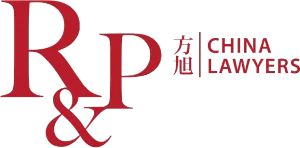- within Intellectual Property topic(s)
- in China
- with readers working within the Healthcare and Retail & Leisure industries
- within Intellectual Property, Privacy and Tax topic(s)
The trademark registration processes in the European Union (EU) and China have several important differences. Here's a detailed comparison for someone familiar with the EU system:
1. System Structure
- European Union: The EU offers a unified trademark registration system through the European Union Intellectual Property Office (EUIPO). A single application can provide protection across all EU member states.
- China: China's trademark system is national, meaning that trademarks must be registered separately in China through the China National Intellectual Property Administration (CNIPA). There is no regional system that covers multiple countries like the EU.
2. First-to-Use vs. First-to-File
- European Union: The EU operates primarily on a first-to-file basis. This means that the first person to file a trademark application will generally have the rights to that trademark, regardless of prior use.
- China: China also follows a first-to-file system. This can lead to challenges where a party registers a trademark without prior use, potentially obstructing the legitimate user's rights.
3. Application Process
- European Union: The application process with the EUIPO is relatively streamlined. Applicants can file online, and the examination includes checks for absolute grounds for refusal (e.g., distinctiveness) and potential conflicts with existing marks.
- China: The application process in China is more complex and can take longer. Applications must be filed with CNIPA, and the examination is thorough. Additionally, foreign applicants often need to engage a local agent, which can add to the complexity.
4. Duration and Renewal
- European Union: An EU trademark registration is valid for ten years from the filing date and can be renewed indefinitely for additional ten-year periods. Renewal is straightforward as long as the trademark is in use.
- China: In China, trademark registrations also last for ten years and can be renewed indefinitely. However, there is a requirement for regular use, and if not used for three consecutive years, the trademark may be vulnerable to cancellation.
5. Opposition and Cancellation
- European Union: The EU system allows for a three-month opposition period after a trademark application is published. Any party can oppose the registration based on earlier rights.
- China: In China, there is a three-month opposition period as well. Additionally, parties can challenge a registered trademark on various grounds, including non-use.
6. Enforcement and Infringement
- European Union: Trademark owners can enforce their rights through civil litigation across member states. The EU provides a robust legal framework for enforcement, including cross-border protection.
- China: While trademark rights are legally protected in China, enforcement can be more challenging. The effectiveness of legal remedies can vary, and trademark owners may face hurdles in litigation, especially against local businesses.
Conclusion
In summary, while both the EU and China have trademark registration systems, the differences in structure, processes, and enforcement mechanisms can significantly impact trademark strategy. Understanding these distinctions is crucial for businesses looking to protect their intellectual property in both regions.
The content of this article is intended to provide a general guide to the subject matter. Specialist advice should be sought about your specific circumstances.


